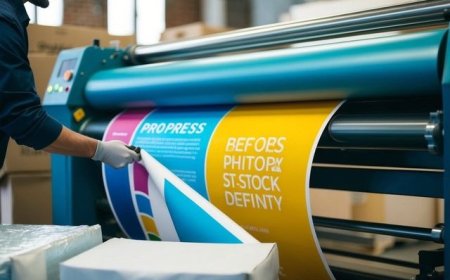How to Use the Charlotte CATS Light Rail Blue Line Guide
Introduction The Charlotte CATS Light Rail Blue Line is a vital component of Charlotte’s public transportation network, providing efficient, reliable, and accessible transit service throughout the city. For both residents and visitors, understanding how to use the Blue Line effectively can significantly enhance mobility, reduce travel time, and improve overall transit experience. This comprehensiv
Introduction
The Charlotte CATS Light Rail Blue Line is a vital component of Charlotte’s public transportation network, providing efficient, reliable, and accessible transit service throughout the city. For both residents and visitors, understanding how to use the Blue Line effectively can significantly enhance mobility, reduce travel time, and improve overall transit experience. This comprehensive guide, How to Use the Charlotte CATS Light Rail Blue Line Guide, is designed to help you navigate the system confidently, whether you are a first-time rider or a regular commuter.
In this tutorial, we will walk you through the practical steps of using the Blue Line, share best practices for a smooth journey, introduce useful tools and resources, provide real-life examples, and answer frequently asked questions. By the end, you will be equipped with everything you need to maximize the benefits of Charlotte’s Blue Line light rail.
Step-by-Step Guide
Step 1: Planning Your Trip
Effective use of the Blue Line begins with solid trip planning. Start by identifying your origin and destination stations along the Blue Line route. The line runs from the University of North Carolina at Charlotte (UNCC) in the northeast to the south end near the I-485/South Boulevard area, passing key stops such as Uptown Charlotte, Central Piedmont Community College, and more.
Use the official Charlotte Area Transit System (CATS) website or mobile apps to access the Blue Line map, schedules, and service alerts. Decide on your travel time by checking train frequency and estimated travel duration between stations.
Step 2: Purchasing Tickets and Fare Options
Before boarding, you need to purchase a valid fare. CATS offers several fare options including single-ride tickets, day passes, and monthly passes. Tickets can be bought via the CATS mobile app, ticket vending machines at stations, or retail locations.
Remember to have your ticket ready or mobile app activated for easy validation. The Blue Line employs a proof-of-payment system, so fare inspectors may ask to see your ticket during your ride.
Step 3: Arriving at the Station
Arrive at your boarding station a few minutes early to avoid missing your train. Stations are equipped with platforms clearly marked with Blue Line signs. Pay attention to the digital display boards indicating the arrival times of the next trains.
Make sure to stand behind the yellow safety line on the platform and wait for the train to come to a complete stop before boarding.
Step 4: Boarding the Train
The Blue Line trains are designed for easy boarding, including level boarding for accessibility. Enter through any door, and if you are carrying a bicycle or have mobility devices, designated spaces are available on the train.
Be courteous to other passengers by giving priority seating to seniors, people with disabilities, and pregnant riders.
Step 5: Riding the Blue Line
During your ride, listen for station announcements or watch for signs indicating upcoming stops. The Blue Line trains are equipped with clear audio and visual aids to keep you informed.
Remain seated or hold onto handrails for safety, especially during acceleration or deceleration. Avoid blocking doors or aisles to maintain smooth boarding and exiting for all passengers.
Step 6: Exiting the Train
As your stop approaches, prepare to exit by gathering your belongings and moving closer to the door. Once the train stops, exit promptly but safely through the nearest door.
Follow station signage to reach your onward destination, whether it’s a connecting bus, parking facility, or pedestrian pathway.
Step 7: Transfers and Connections
If your journey requires transferring to another mode of transportation, such as a bus or another rail line, plan ahead to minimize wait times. Many Blue Line stations serve as transit hubs with synchronized schedules for convenient transfers.
Use transfer tickets or passes as applicable and confirm the connection points in advance.
Best Practices
Use Real-Time Information
Leverage real-time tracking tools available via apps or station displays to get the most accurate arrival and departure times. This reduces waiting and helps in adjusting your schedule on the fly.
Stay Safe and Alert
Always remain aware of your surroundings on the platform and inside the train. Follow safety guidelines such as standing behind the yellow lines and reporting suspicious activity to authorities through official channels.
Plan for Peak Hours
The Blue Line can experience high ridership during rush hours. If possible, travel during off-peak times to enjoy a more comfortable ride. If traveling during peak times, be prepared for crowded cars and exercise patience.
Maintain Accessibility Etiquette
Respect priority seating and spaces designed for passengers with disabilities. If you don’t require these accommodations, offer seats to those who do.
Keep Tickets Ready
Since fare inspections can occur anytime, always keep your ticket or pass accessible to avoid delays or fines.
Tools and Resources
Official CATS Website and Mobile App
The primary source for schedules, maps, fare information, and service updates is the CATS official website. Their mobile app offers ticket purchasing, real-time train tracking, and trip planning features.
Google Maps Transit Integration
Google Maps includes Charlotte’s transit system, allowing you to plan routes combining walking, Blue Line trains, and buses with estimated travel times.
Transit Alerts and Social Media
Follow CATS social media channels or subscribe to alert notifications to stay informed about planned service changes, delays, or emergencies affecting the Blue Line.
Station Amenities
Many Blue Line stations provide amenities such as bike racks, park-and-ride lots, and ticket vending machines. Familiarizing yourself with these can enhance convenience.
Real Examples
Example 1: Commuting from University City to Uptown Charlotte
A student living near the UNCC station plans to attend classes in Uptown Charlotte. By purchasing a monthly pass via the mobile app, they save money and time. They catch the Blue Line train during the morning off-peak period, using real-time tracking to arrive just before the train. The journey takes approximately 35 minutes, arriving at the 7th Street Station, within walking distance of campus buildings.
Example 2: Visiting a Sporting Event at Bank of America Stadium
A visitor attending a Panthers game opts to use the Blue Line to avoid parking hassles. They purchase a day pass at the nearest station and board the train at South Boulevard station. After a short ride, they disembark at the Stonewall Station, a quick walk to the stadium. Post-game, they use the mobile app to check train arrival times, reducing wait time in the crowded area.
Example 3: Transferring from Light Rail to Bus for Airport Access
A traveler heading to Charlotte Douglas International Airport rides the Blue Line to the Scaleybark station, where they transfer to a bus route serving the airport. The traveler uses the CATS app to coordinate the transfer, ensuring minimal waiting and a seamless journey.
FAQs
How frequently do Blue Line trains run?
Trains typically run every 7 to 15 minutes during peak hours and every 15 to 30 minutes during off-peak times. Frequency may vary on weekends and holidays.
Are bicycles allowed on the Blue Line trains?
Yes, bicycles are permitted. There are designated spaces on each train for bikes, but riders should avoid peak hours for a more comfortable experience.
Is the Blue Line accessible for passengers with disabilities?
Absolutely. All Blue Line stations and trains are ADA compliant, featuring level boarding, priority seating, and audible/visual announcements.
Can I use the same ticket for bus and light rail?
Yes, most CATS fare options allow transfers between buses and light rail within a specified time period. Check your fare type for details.
What should I do if I lose my ticket?
Since tickets cannot be reissued, purchasing a new ticket is necessary. Consider using mobile ticketing to avoid this issue.
Conclusion
Mastering the use of the Charlotte CATS Light Rail Blue Line can transform how you navigate the city, making travel more efficient, cost-effective, and enjoyable. By following this detailed guide—from planning your trip and purchasing tickets to boarding and making transfers—you can confidently leverage this transit system for daily commutes, events, and leisure travel.
Remember to utilize recommended tools and adhere to best practices for a safe and seamless experience. Whether you are a local resident or a visitor, the Blue Line is a powerful asset in Charlotte’s transit landscape. Embrace it fully and discover new possibilities in urban mobility.


































